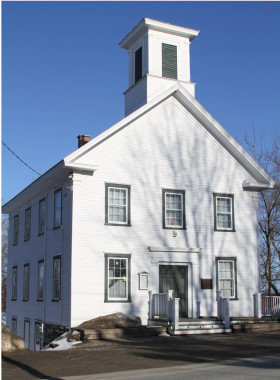eaton_corner_academy.jpg

<strong>EATON ACADEMY BUILDING.</strong>
There were very few academies in the Eastern Townships at this time, partly because the settlers could not afford to forego the labour of their older children and partly because the only government grants available were through the Royal Institution of Learning. As former New Englanders, most Townships' residents resented the Royal Institution's affiliations with the Church of England.
Before academies existed in the region, local students who attended school beyond the elementary level went to New England to continue their education. Eaton's settlers were more pragmatic. Their first resident minister, who also acted as teacher, served both the Congregationalists and Presbyterians, then became an Episcopalian (Anglican) around 1820 in order to draw a salary from the Royal Institution.
Built in 1864, the Eaton Corner Academy was a model school for training future teachers. Built in the neoclassical style, it is very reminiscent of architecture of New Engl
There were very few academies in the Eastern Townships at this time, partly because the settlers could not afford to forego the labour of their older children and partly because the only government grants available were through the Royal Institution of Learning. As former New Englanders, most Townships' residents resented the Royal Institution's affiliations with the Church of England.
Before academies existed in the region, local students who attended school beyond the elementary level went to New England to continue their education. Eaton's settlers were more pragmatic. Their first resident minister, who also acted as teacher, served both the Congregationalists and Presbyterians, then became an Episcopalian (Anglican) around 1820 in order to draw a salary from the Royal Institution.
Built in 1864, the Eaton Corner Academy was a model school for training future teachers. Built in the neoclassical style, it is very reminiscent of architecture of New Engl